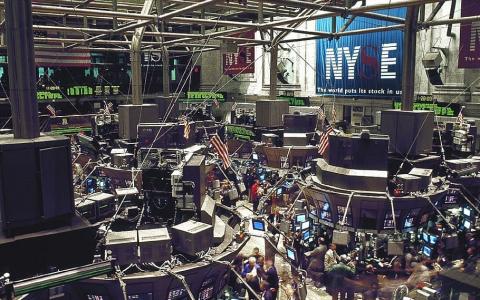
(Bloomberg) Wall Street’s great inflation trade is losing steam, judging by a slew of cross-asset signals and where all the investing billions are actually going.
With reflation strategies again playing second-fiddle to the crypto volatility and meme stock mania, stable Treasury yields helped the tech-heavy Nasdaq 100 outperform the Dow Jones Industrial Average by the most in seven weeks.
Debt gauges of inflation retreated from multi-year highs, while the S&P 500 largely sat still to give the benchmark the smallest monthly move since January 2020. Even the value strategy finally stalled, after notching some of the biggest gains since the financial crisis earlier this year.
Given the reopening euphoria, a cool-down is to be expected. And recent days still delivered ammo to the price-growth camp: Jobless claims delivered surprises again, while two Federal Reserve officials signaled the U.S. economic expansion may warrant a taper discussion soon enough.
All that suggests the reflation rally may yet power ahead if the business cycle booms anew and renews investor conviction. JPMorgan Chase & Co., for one, estimates money-manager positioning in inflation-sensitive assets including commodities is still below post-2008 peaks.
“Investor expectations had caught up with the better economic data,” said Keith Lerner, chief market strategist at Truist Advisory Services. “That’s more of a pause to us instead of a trend change.”
As lockdowns get lifted and trillions in stimulus heats up the American economy, the biggest question in markets is whether prices are on the cusp of breaking out of their decades-long doldrums. For many, bets on bonds still make sense right now when the Fed has the market’s back and the data remains uncertain. Meanwhile Chinese policy moves of late are undercutting bullish wagers on commodities.
On all this, the world of exchange-traded funds is sending mixed signals: Inflation-linked bonds took in $3 billion in May even as nominal government debt and corporate securities kept drawing new money, data compiled by Bloomberg Intelligence show.
Market-derived expectations of price growth are sending a clearer message as the two-year breakeven gauge further outpaced five- and 10-year levels this month -- bucking the norm.
“Fixed income investors have emphatically concluded that it will be transitory,” Brian Reynolds, chief market strategist at Reynolds Strategy LLC, wrote in a note, referring to inflation.
Stocks have been taking their cue from the lack of inflation drama in the bond market of late. A long-short value strategy -- which tends to bet on more cyclical companies and benefits from higher rates -- dropped this week by the most since the middle of April.
Systematic styles in quality and low-volatility names also picked up. It’s a sign defensive investors are seeking “visible growth” in earnings rather than bidding up companies acutely linked to the economic expansion, according to Citigroup Inc. strategists.
Hedge funds are also in wait-and-see mode. Clients at JPMorgan’s prime brokerage are adding exposures to both cyclical and growth shares -- suggesting reluctance to bet on one side of the inflation debate.
Yet with commodity and wage pressures, there’s a growing chance the Fed will tighten monetary policy sooner than expected, according to Sushil Wadhwani, chief investment officer at QMAW, a PGIM unit. As long as financial conditions stay loose, it makes sense to go long commodities and stocks while betting on a steepening yield curve, according to the London-based systematic investor.
“Macroeconomic policy especially in the U.S. is incredibly expansionary by historical standards,” Wadhwani said. “I’m increasingly concerned that 2022 inflation will not go back as low as they say.”



